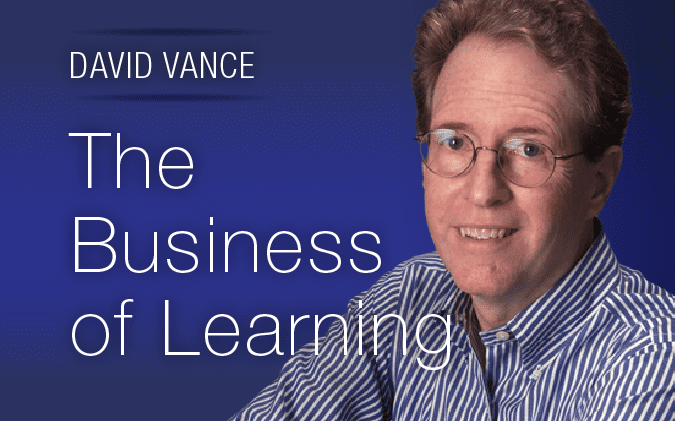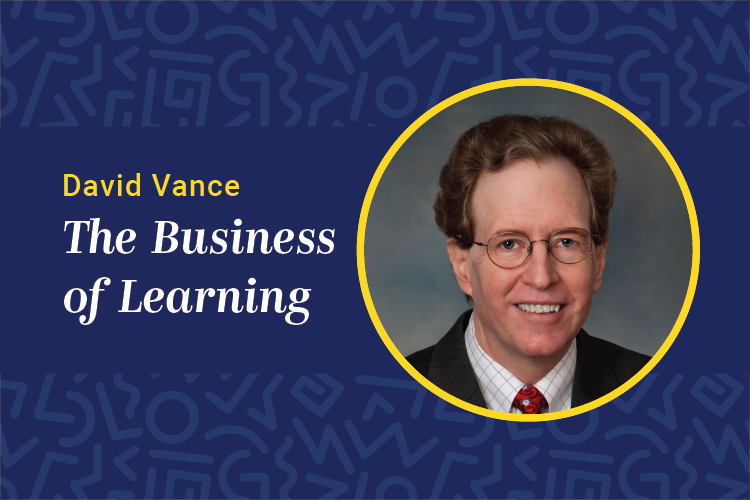 The learning field is currently focused on personalized learning, which can be defined as providing learners with individualized, custom content in the way each prefers to learn.
The learning field is currently focused on personalized learning, which can be defined as providing learners with individualized, custom content in the way each prefers to learn.
Advances in digital learning and platforms combined with an explosion in learning content make this trend not only possible but highly desirable. It has the potential to contribute significantly to better learning experiences and higher application rates leading to better outcomes. That said, there is a danger that some will consider personalized learning not just a strategy to improve learning but the goal itself, the reason or mission for the learning department. This brings us to a discussion of means versus ends and the importance of keeping the two straight.
I would suggest that personalized learning is best considered a means to an end and that it will almost never be an end in itself. Over the past several years, some in our profession have advocated that personalized learning is the end. They have redefined their mission as a learning department or corporate university to provide learners with whatever they want in whatever form they want it, which is an extension of my previously noted definition of personalized learning.
At its heart, this issue of means versus ends is far from an issue of semantics; rather, it is a fundamental question about the reason for the existence of corporate training.
Imagine a discussion with your CFO or CEO. They ask what your strategy is for next year. You say it is personalized learning and that the majority of your resources will be dedicated to providing more and better personalized learning. They ask why. You tell them learners will be more engaged, will learn more and will retain more.
I guarantee you that in their mind, you never really answered the question. Your answer is good as far as it goes, but it doesn’t get to the business reason for learning. You described a process improvement for learners, one that will deliver learning more effectively and efficiently, one that is good — but not good enough. Basically, you are improving the means to an end by personalizing the learning, but your CEO or CFO wants to know what that end is.
In their mind, the end may be higher sales, greater productivity or quality, fewer accidents, lower operating costs or higher employee engagement, but you didn’t connect the dots for them. By not appreciating the difference between the two, you focused just on the means when you also needed to address the ends. Better to tell them that you will improve learning to effect higher sales, lower costs or whatever their goals are. These are the ends they care about, and once they know that you are working toward the same ends, they will be more receptive to your request for resources to improve the means (personalized learning).
As a profession, we must continue to make great strides in process improvement, and personalized learning is one such process improvement. But it is not and never will be an end in itself — any more than e-learning, blended learning or mobile learning. We don’t provide learning just to provide learning; the learning must serve a higher need. It must serve an end, and that end should be one of your organization’s high-level goals or needs.
With this understanding, we also can see that personalized learning is not the opposite of “company learning,” or learning directed by the company (not the employee) to meet company needs. Instead, personalized learning should support the company goals and needs even if it is directed or mandated by the company. If at the discretion of the employee, it is most likely to improve employee engagement, which is a company goal in almost all organizations. If directed by the company, personalized learning will support one of the other company goals, such as higher sales.
In short, personalized learning may be at the discretion of the employee or at the discretion of the company, but in either case, it is a means to an end.
David Vance is the executive director for the Center for Talent Reporting, founding and former president of Caterpillar University and author of “The Business of Learning.” He can be reached at editor@CLOmedia.com.














